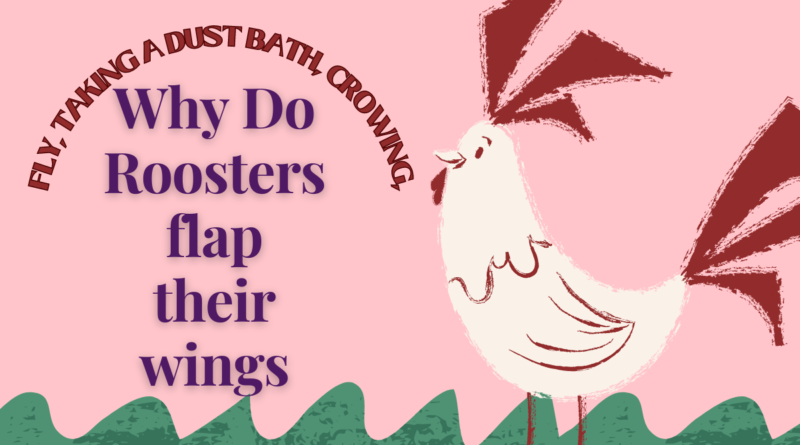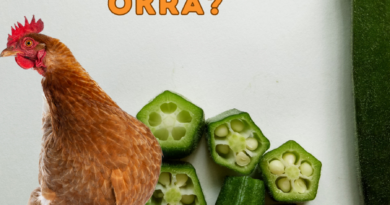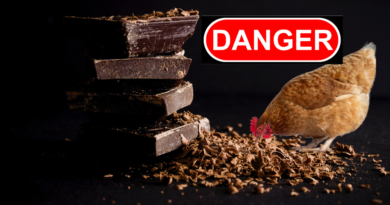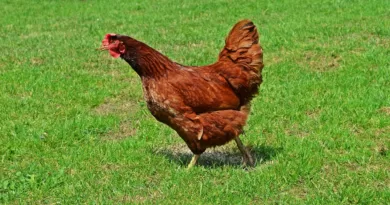Why Do Roosters Flap Their Wings: Uncovering the Mystery
Have you ever seen a rooster flapping its wings and wondered why it was doing this? Farmers have observed these birds engaging in this bizarre behavior for centuries. But unfortunately, little scientific research has been conducted on the reasoning behind it. Roosters are thought to flap their wings for practical and emotional purposes.
In this blog post, I’ll dig deeper into the speculation surrounding this strange phenomenon and uncover some of the mysteries about, why do roosters flap their wings? Be sure to read all the way through if you want to discover just how complex avian body language can get.
The symbolism of roosters and why they have become a symbol of courage
Roosters have become a powerful symbol of courage, waking up well before dawn to announce the new day’s coming. The sight of a rooster raising its proud crest and crowing loud and clear is often a sign of strength and resilience. It inspires us to meet life’s challenges with the same daring spirit.
To be hailed as “cocky” indicates self-confidence, and its ability to make us face our fears has earned it an oft-repeated place in folklore as a symbolic figure of bravery. Whether natural or mythical, this resilient bird has undoubtedly made its mark on our collective psyche. They offer us a way to rise above challenging circumstances and attain success.

Overview of the function of wings for roosters, including flight and communication
Roosters are well known for their impressive wingspan and use of their wings for dramatic displays. Their wings serve various functions, from traditional flight to more exceptional communication with the flock. The rooster’s wings’ primary purpose is to provide lift and stability while they soar through the air. But they also use them to maintain balance when walking across unlevel terrain.
Additionally, to establish dominance within their flock, roosters will flap their wings fiercely and often to intimidate other members or potential rivals. This form of communication allows roosters to assert themselves as alpha males who should be respected quickly. Without the function of these magnificent wings, the everyday life of many flocks would undoubtedly be much less exciting.

Investigating the behavior patterns of roosters, why they flap their wings differently than other birds
Roosters are remarkable creatures whose behavior patterns can sometimes be puzzling to us. One such behavior that stands out is the unique way they flap their wings, which differs significantly from most other birds. To understand this particular trait, it is important to investigate why roosters flap their wings differently. Scientists have found that roosters use a flapping technique called “passage flight,”. It requires the bird to generate two-thirds of its thrust in its upstroke. Compared to other birds, they typically produce power with more extended and broader downstrokes.
This technique is much more effective for these majestic animals as it allows them to reach soaring heights quickly and easily. While there are many other potential reasons for this flapping pattern, one thing is sure – when roosters take flight, they come alive and demonstrate an unmatched grace and power, unlike any other bird.
Why Do Roosters Flap Their Wings
| Rooster Facts | |
|---|---|
| Prey | Insect |
| Name of Young | Chick |
| Group Behavior | Sociable |
| Fun Fact | Will mate with the entire flock |
| Estimated Population Size | 23 billion |
| Biggest Threat | Humans, predators |
| Most Distinctive Feature | Bushy tailfeathers |
| Gestation Period | 21 days |
| Other Name(s) | Cock, cockerel, capon |
Examining the physical features that make roosters different from other birds
Roosters are distinct from other birds due to their unique physical features. They have shorter, feathered legs and longer, spikier tail feathers. Their beaks have a raised top allowing them to peck food off the ground and crack open eggs and nuts. Roosters also have brightly colored feathers ranging from deep reds and greens to blues and yellows. They are most famous for their large wingspan and renowned crow.
Male roosters often flap their wings while strutting around, beating up smaller animals, or marking out important markers in their territory. Flapping the wings is a way for them to stretch their muscles in preparation for flight, but it also serves as an impressive visual display of dominance.

Exploring the patterns in which roosters use their wings to defend themselves or attract mates
Roosters have been observed flapping their wings for various purposes. It is related to survival or is passed down from generation through an evolutionary process. It is believed that rooster flapping their wings serves as a territorial warning. A defense mechanism against predators, and even a technique they use to attract mates.
The frequency and intensity of the flapping pattern can vary depending on the current situation. Roosters that establish dominance over fellow birds will tend to display more powerful and frequent ways than those attempting to woo potential partners. As fascinating as this behavior may seem, it’s fundamental to understanding the complex social dynamics between different avian species.
Collecting data from research conducted on flapping behavior to understand more about why roosters flap their wings
As an animal lover, I’m fascinated by birds’ behavior- wildly why roosters flap their wings. Determining why this behavior occurs is a priority for many bird Researchers, prompting research and collection of data to investigate further. Studies have produced much valuable information about the flapping behavior observed in roosters.
However, there is still more to be uncovered as Scientists seek to understand its purpose and outcome truly. Through diligent research and data collection, researchers are striving to discover. Why do roosters exactly flap their wings and what might be motivating them to do so?
| Rooster Physical Characteristics | |
|---|---|
| Color | Brown Red Blue Black White Green |
| Skin Type | Feathers |
| Top Speed | 9 mph |
| Lifespan | 8 to 15 years |
| Height | 2 to 3 feet tall |
| Length | 10 to 16 inches |
| Age of Sexual Maturity | 16 to 26 weeks |
| Age of Weaning | Age of Weaning |
Conclusion
Roosters have been cherished symbols of courage and boldness for centuries, unique from other birds in many ways. Their wings are essential to them and provide protection, communication tools, and flying ability. In addition, roosters use their wings differently than other birds. From the research on flapping behavior, more is known about why roosters flap their wings rather than just for the flight.
There are even species-specific patterns of wing motion in different situations associated with courtship displays being one example. The symbolic importance of roosters and the intriguing differences between how they use their wings compared to other birds. Provide some interesting insights into these remarkable animals that deserve further exploration.




